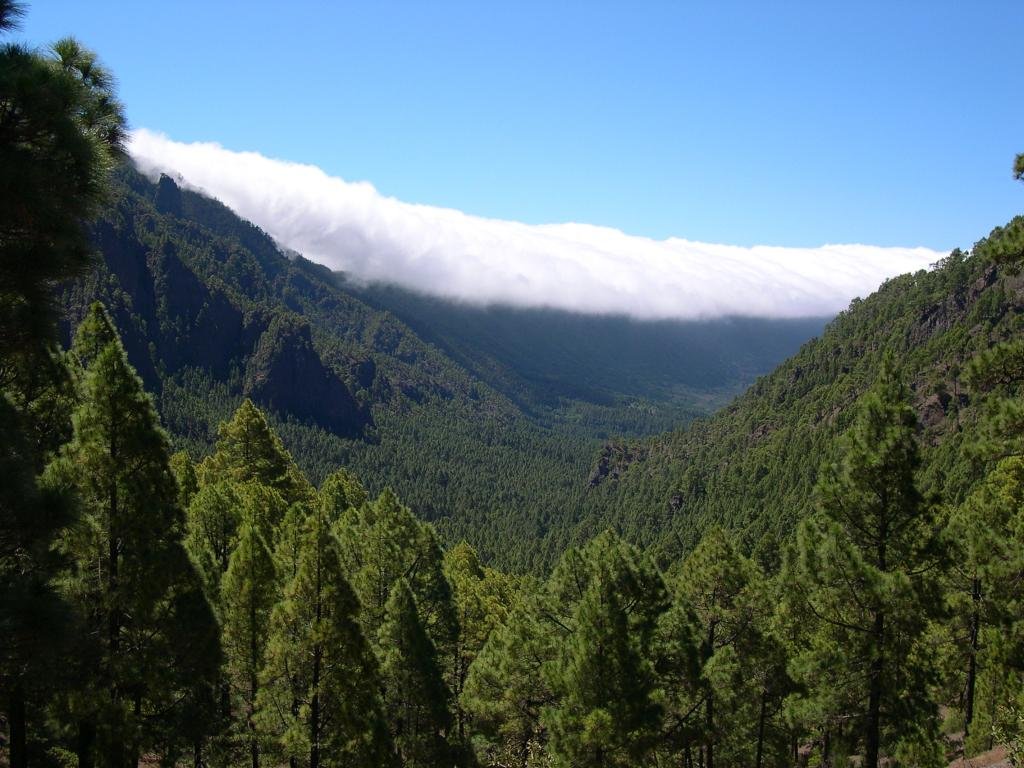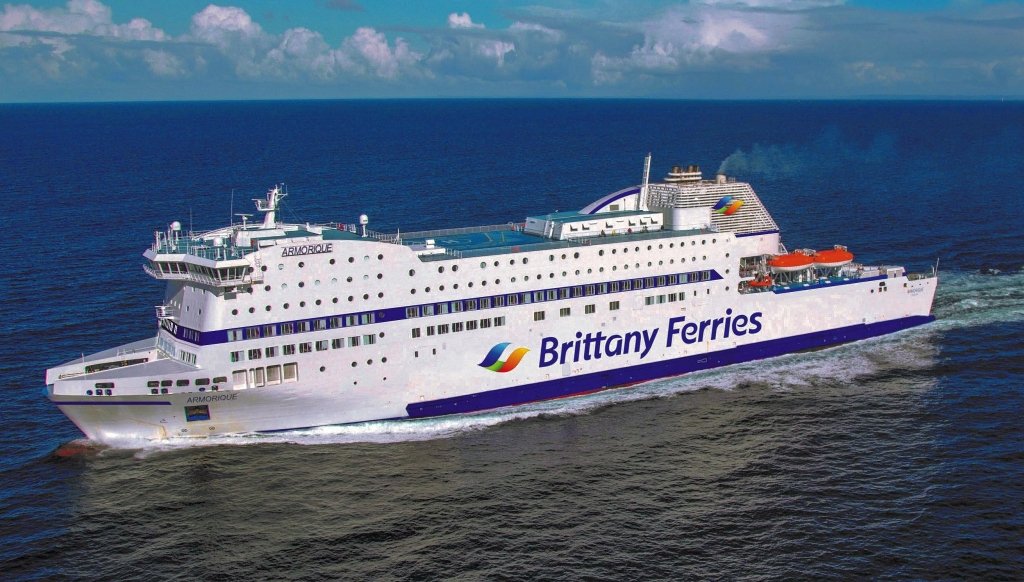Taking a ferry to or from Spain is more than just a way to travel — it’s a journey through some of Europe’s richest marine and birdlife habitats. Crossing the Bay of Biscay from Portsmouth to Santander offers a real chance to spot dolphins, fin whales, and seabirds such as shearwaters and gannets. Sailings across the Strait of Gibraltar sometimes coincide with spectacular raptor migrations, making them unforgettable for birdwatchers.
For eco-conscious travelers, ferries provide a lower-impact alternative to flying, while also allowing you to bring your car, bicycle, or even pets. Whether you’re heading to Spain for whale watching in the Canary Islands, birdwatching in Doñana, or simply for a scenic road trip, ferries offer a flexible and enriching way to begin your adventure.
Wildside Holidays recommends OMIO as a trusted resource for ferry and other travel options to Spain. Their platform makes it easy to compare routes, check schedules, and book tickets, helping you plan your journey with confidence. Some links are affiliate links, which support our site at no extra cost to you.
Why Choose a Ferry to or from Spain?
Unlike airports, ferry terminals move at a slower pace. You can drive on board with your own car or camper, carrying everything you need for a wildlife holiday — binoculars, scopes, field guides, even bicycles. There are no strict baggage limits, and overnight cabins turn your crossing into a moving hotel. The journey itself becomes part of the holiday: watching the sun set at sea, waking up to new coastlines, and scanning the horizon for seabirds or marine mammals. For families, road-trippers, and those who enjoy the freedom of slow travel, ferries often feel more like an adventure than a transfer.
Popular Ferry Routes to Spain
UK to Spain Ferries
Crossings from the UK are particularly appealing for wildlife enthusiasts. The Portsmouth to Santander and Portsmouth to Bilbao routes with Brittany Ferries sail directly across the Bay of Biscay, one of the best places in Europe to observe whales and dolphins from the deck. You may also spot gannets diving or shearwaters gliding low across the waves. These overnight journeys last between 24 and 32 hours, with comfortable cabins and good onboard facilities. The Plymouth to Santander route offers similar experiences and is convenient for travelers from southwest England.
Santander, the capital of Cantabria, serves as a key gateway to Green Spain, a region famed for its lush landscapes, rugged coastline, and vibrant wildlife. From the city’s ferry port, travellers can easily access verdant valleys, ancient forests, and the Cantabrian Mountains, where raptors soar and otters and foxes can sometimes be spotted along riverbanks. Whether you’re planning a short stop in the city or a longer exploration of the surrounding countryside, Santander is the perfect starting point for immersing yourself in Cantabria’s natural beauty.

For a detailed guide on what to see and do in this region, including wildlife hotspots, cultural attractions, and scenic drives, visit our dedicated page on Cantabria
France to Spain Ferries
From France, ferries run between Marseille or Toulon and Barcelona. These crossings are shorter, usually between 14 and 18 hours, but they still provide opportunities to see Mediterranean wildlife. Yachts, fishing boats, and seabirds often accompany the journey along the Catalan coast.
Italy to Spain Ferries
Travelers embarking from Genoa, Savona, or Civitavecchia can reach Barcelona with Grandi Navi Veloci or Grimaldi Lines. These 20–24 hour crossings link two Mediterranean cultures and pass through waters frequented by striped dolphins and storm-petrels. Many travelers use these routes as part of extended European road trips.
Catalunya, also known as Catalonia or Cataluña, sits on the northern edge of Spain, bordering Andorra and France along the eastern Pyrenees. Its vibrant capital, Barcelona, is not only a cultural and culinary hub but also a key ferry gateway from France and Italy. From the city’s waterfront, travellers can explore coastal towns, scenic beaches, and nearby wildlife-rich areas along the Catalan coast.

For a complete guide to Catalunya, including top sights, local wildlife, and travel tips, see our dedicated page on Catalunya
North Africa to Spain Ferries
The Strait of Gibraltar is famous not only as a migration bottleneck for raptors and storks but also as one of the busiest ferry corridors in the world. From Tangier to Tarifa or Tangier to Algeciras, journeys can take little more than an hour. Other routes such as Nador to Almería or Algiers to Alicante connect North Africa to Spain with longer overnight crossings. These ferries carry a mix of families, traders, and tourists, all sharing one of the most historic sea passages in the world.
Ferry Routes from Spain
To the Balearic Islands
The Balearic Islands — Mallorca, Ibiza, and Menorca — are easily reached by ferry from Barcelona, Valencia, or Denia. Depending on the vessel, the journey can last anywhere from two hours on a fast ferry to nine hours on a conventional ship. For birdwatchers, these crossings open the door to island habitats where Audouin’s gulls, Balearic shearwaters, and Eleonora’s falcons can be seen.
The Balearic Islands, a stunning archipelago in the western Mediterranean Sea, are a true paradise for nature lovers. Situated close to the Spanish mainland, near Catalonia and the Valencian Community, the islands boast seven Natural Parks and one National Park. Visitors can explore pristine beaches, rugged cliffs, and protected habitats where endemic birds and marine life thrive. With easy ferry connections from Barcelona, Valencia, and Denia, the Balearics are an ideal destination for combining wildlife spotting with scenic island adventures.

For more details on exploring these islands and their natural highlights, visit our dedicated page on The Balearic Islands
To the Canary Islands
Sailing from Cádiz to the Canary Islands is a true sea voyage, lasting up to 40 hours. These ferries, operated by Naviera Armas, are essential for freight and residents but also offer travelers a unique way to approach volcanic islands famed for their whale watching and endemic birds. Spotting pilot whales or Cory’s shearwaters during the crossing makes the long journey unforgettable. Cádiz to Gran Canaria and Cádiz to Lanzarote are very popular routes.
The Canary Islands, an Atlantic archipelago off north-west Africa, are a nature lover’s paradise. Made up of seven main and several smaller volcanic islands, they offer unique landscapes, endemic wildlife, and unforgettable outdoor adventures.

For more information on exploring these islands and their natural highlights, visit our dedicated page on The Canary Islands
To Morocco
The southern tip of Spain is just a short hop from North Africa. Ferries from Algeciras or Tarifa to Tangier are among the busiest in Europe, with crossings taking just over an hour. For those heading further east, ferries from Almería to Nador or Melilla provide overnight passages that bridge two continents. Watching birds migrate across the strait as you cross is a remarkable travel experience in itself.
Major Ferry Companies Operating in Spain
Several companies operate these varied routes. Brittany Ferries connects the UK with northern Spain, offering some of the most wildlife-rich sea crossings in Europe. Balearia and Trasmediterranea are the main providers for the Balearic Islands, while Naviera Armas maintains lifeline routes to the Canary Islands and Morocco. Italian operators Grandi Navi Veloci (GNV) and Grimaldi Lines link Spain to the central Mediterranean, carrying both holidaymakers and long-haul travelers. Each operator has its own style, but most offer comfortable cabins, dining, and lounges that make long journeys enjoyable.
Travel Times, Prices, and Onboard Experience
Crossing times vary widely. A quick hop across the Strait of Gibraltar can take just an hour, while the Cádiz–Canary Islands route stretches into a two-day voyage. Prices also span a wide range: short crossings can cost around €30 for foot passengers, while longer routes with cabins and vehicles may reach €500 or more. Onboard, you’ll usually find restaurants, cafes, lounges, and children’s play areas. Some ferries even feature cinemas or swimming pools. Wildlife enthusiasts can spend hours on deck scanning the sea, while pet owners can take advantage of cabins designed specifically for animals.
Practical Tips for Booking Ferries to and from Spain
Planning ahead makes ferry travel smoother. Summer sailings sell out quickly, especially those with cabins or vehicle spaces, so booking early is essential. Prices and onboard facilities differ between companies, so it’s worth comparing options before committing. Larger vehicles such as motorhomes may need special arrangements, and arriving at ports early helps avoid last-minute stress. Overnight sailings are excellent for combining transport with accommodation, while off-season journeys often bring significant savings. Spring and autumn crossings can also be particularly rewarding for wildlife sightings, with migration peaks bringing thousands of birds across the seas.
Frequently Asked Questions About Ferries to and from Spain
Ferries to and from Spain are not just a practical way to reach your destination — they are experiences in themselves. Whether you are scanning the Bay of Biscay for whales, watching raptors soar over Gibraltar, or arriving at dawn in the Balearics, each crossing adds richness to your journey. For eco-conscious travelers, wildlife watchers, and those who love the rhythm of slow travel, ferries offer a chance to connect with both sea and sky. Compare routes, plan ahead, and let your Spanish adventure begin with a voyage across the water.
Travelling from the UK, routes such as Portsmouth to Santander or Portsmouth to Bilbao are excellent for spotting marine life. Onboard, you might see dolphins leaping alongside the ship or seabirds like gannets diving nearby. Overnight cabins make longer crossings comfortable, while watching the Bay of Biscay’s waters adds a wildlife twist to your journey. More route details are in our full guide.
Depending on the vessel, crossings from Barcelona, Valencia, or Denia to Mallorca, Ibiza, or Menorca range from two to nine hours. Fast ferries save time, while conventional ships offer a chance to relax on deck and watch seabirds and coastal scenery. Seasonal variations can affect schedules, so checking in advance is advised.
Yes, most major operators like Brittany Ferries, Balearia, and Naviera Armas allow vehicles onboard. Bringing a car, camper, or even a motorbike makes road trips across Spain and its islands more flexible. Vehicle bookings often sell out in peak season, so early reservations are recommended.
Ferries over the Strait of Gibraltar are renowned for raptor migrations, storks, and occasional marine mammals. Even brief crossings, such as Tangier to Tarifa, provide a unique vantage point to observe birds in flight. Passengers often report spotting dolphins and shearwaters near the coast. Detailed route insights are covered in the main article.
Absolutely. While crossings can last up to 40 hours, cabins make the journey comfortable, and the slow pace allows for observing whales or pilot dolphins off the Atlantic coast. Longer trips provide a gentle introduction to island life, plus the convenience of combining transport with accommodation.
Prices vary widely by season, route, and operator. Off-peak travel, booking in advance, and comparing operators like Balearia, Brittany Ferries, and Naviera Armas can help. Keep an eye out for early-bird deals or weekday crossings, which are often quieter and cheaper. Full cost and schedule guidance is available in our article.
Affiliate Disclosure
Some of the links in this article are affiliate links (OMIO). This means we may earn a small commission if you make a booking through them, at no extra cost to you. Using these links helps support Wildside Holidays and allows us to continue providing detailed travel guides and wildlife tips.
I’ve been living in this lovely area of Western Andalucia for the last 20 years or so and dedicate most of my time to the running of English language tourist information websites for the towns of Cádiz, Ronda, Grazalema, the famous or infamous Caminito del Rey, and also Wildside Holidays, which promotes sustainable and eco-friendly businesses running wildlife and walking holidays in Spain. My articles contain affiliate links that will help you reserve a hotel, bus, train or activity in the area. You don’t pay more, but by using them you do support this website. Thankyou!
